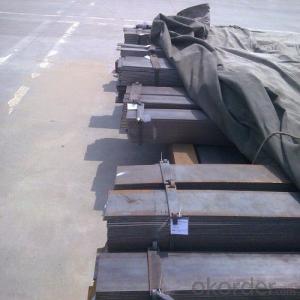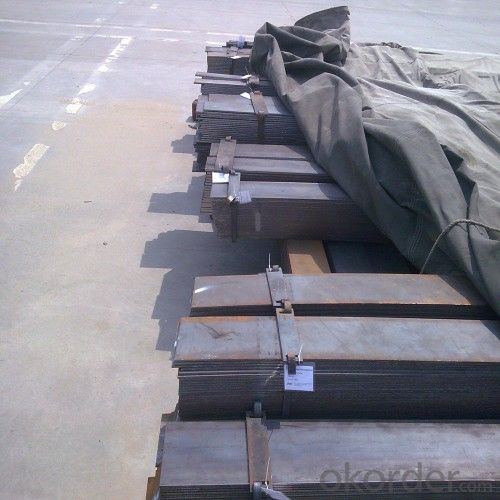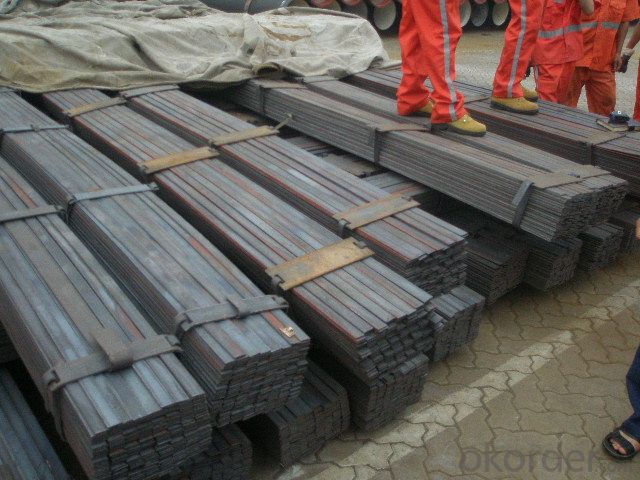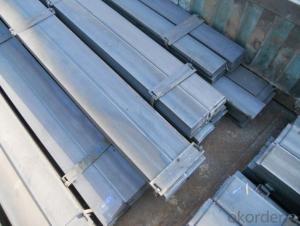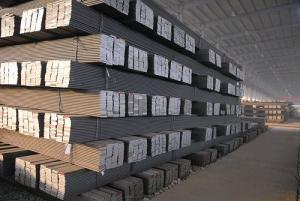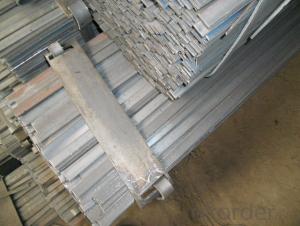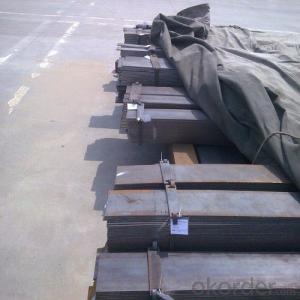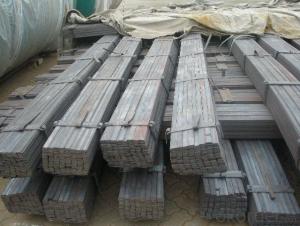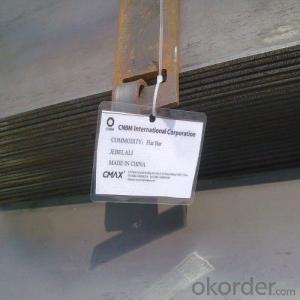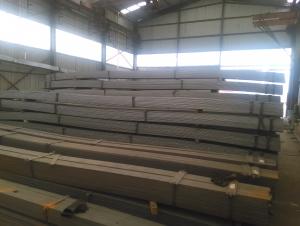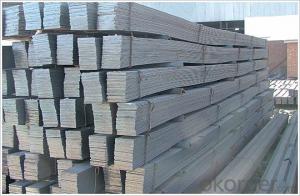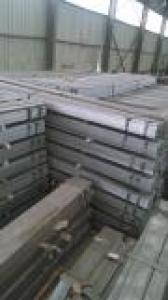Hot Rolled Flat Steel Bar with Material Grade Q235
- Loading Port:
- Tianjin
- Payment Terms:
- TT OR LC
- Min Order Qty:
- 25 m.t.
- Supply Capability:
- 10000 m.t./month
OKorder Service Pledge
OKorder Financial Service
You Might Also Like
OKorder is offering high quality Flat Bar at great prices with worldwide shipping. Our supplier is a world-class manufacturer of steel, with our products utilized the world over. OKorder annually supplies products to European, North American and Asian markets. We provide quotations within 24 hours of receiving an inquiry and guarantee competitive prices.
Product Applications:
Slit Cutting Flat Bars are ideal for structural applications and are widely used in the construction of buildings and bridges, and the manufacturing, petrochemical, and transportation industries.
Product Advantages:
OKorder's Flats Bars are durable, strong, and resist corrosion.
Main Product Features:
· Premium quality
· Prompt delivery & seaworthy packing (30 days after receiving deposit)
· Corrosion resistance
· Can be recycled and reused
· Mill test certification
· Professional Service
· Competitive pricing
Product Specifications:
Manufacture: Hot Rolled
Grade: Q195 – 235
Certificates: ISO, SGS, BV, CIQ
Length: 6m – 12m, as per customer request
Packaging: Export packing, nude packing, bundled
Chemical composition of Q235
Alloy No | Grade | Element(%) | ||||
C
| Mn
| S
| P
| Si
| ||
Q235
|
B
|
0.12—0.20 |
0.3—0.7 |
≤0.045 |
≤0.045
|
≤0.3
|
Physical properties of Q235
Alloy No | Grade | Yielding strength point(Mpa) | Tensile strength (Mpa) | Elongation after fracture(%) | ||||||
Thickness (mm) | Thickness (mm) | |||||||||
≤16 | >16--40 | >40--60 | >60--100 | ≤16 | >16--40 | >40--60 | >60--100 | |||
≥ | ≥ | |||||||||
Q235 |
B |
235 |
225 |
215 |
205 |
375--500 |
26 |
25 |
24 |
23 |
FAQ:
Q1: Why buy Materials & Equipment from OKorder.com?
A1: All products offered byOKorder.com are carefully selected from China's most reliable manufacturing enterprises. Through its ISO certifications, OKorder.com adheres to the highest standards and a commitment to supply chain safety and customer satisfaction.
Q2: How do we guarantee the quality of our products?
A2: We have established an advanced quality management system which conducts strict quality tests at every step, from raw materials to the final product. At the same time, we provide extensive follow-up service assurances as required.
Q3: The products are invoicing on theoritical weight or on actual weight?
A3: We can do it in both manners, according to the customers' request.
Images:
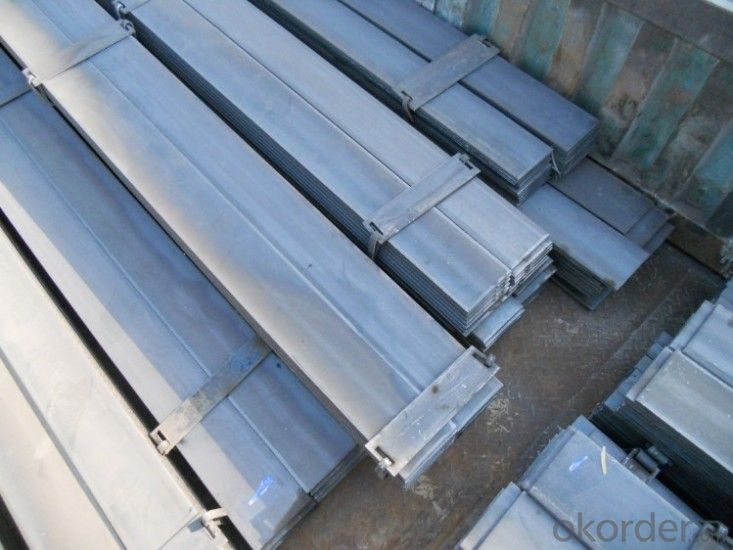
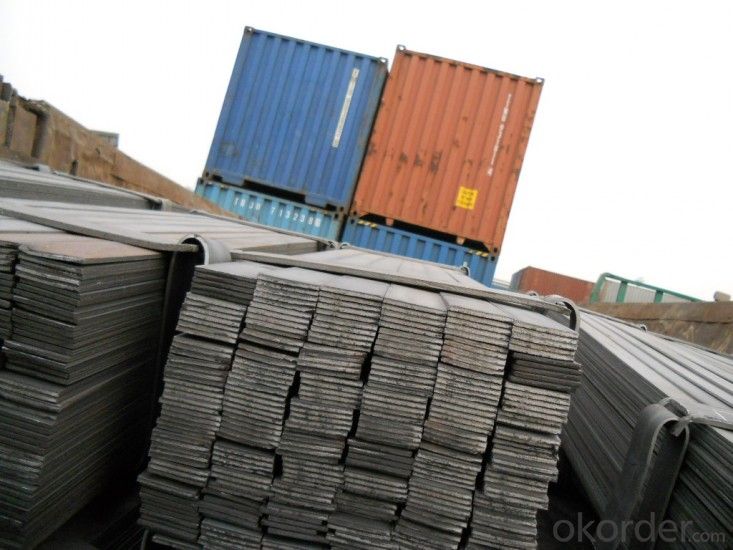
- Q: Do steel flat bars have a specific modulus of elasticity?
- Yes, steel flat bars have a specific modulus of elasticity. The modulus of elasticity is a measure of the stiffness or rigidity of a material and is defined as the ratio of stress to strain within the elastic range. For steel, the modulus of elasticity is approximately 200 gigapascals (GPa) or 29,000,000 pounds per square inch (psi). This means that steel flat bars will deform elastically under a certain amount of stress and return to their original shape once the stress is removed, as long as the applied stress does not exceed the elastic limit.
- Q: How do you store steel flat bars to prevent damage?
- To prevent damage to steel flat bars, it is recommended to store them in a dry and well-ventilated area to avoid moisture buildup and corrosion. Additionally, they should be stacked horizontally with proper support to prevent bending or warping. Using protective covers or separating each bar with wooden or rubber spacers can prevent scratching or damage from contact with other materials. Regular inspection and maintenance are also essential to ensure their longevity and quality.
- Q: Can steel flat bars be used for making kitchen or bathroom fixtures?
- Yes, steel flat bars can be used for making kitchen or bathroom fixtures. Steel is a durable and versatile material that can be easily shaped and welded, making it suitable for various applications in kitchen and bathroom fixtures such as countertops, shelves, brackets, and towel bars. However, it is important to consider factors like corrosion resistance and the desired aesthetic before using steel flat bars for such fixtures.
- Q: Are steel flat bars magnetic?
- Yes, steel flat bars are typically magnetic. Steel is an alloy made primarily of iron, and iron is a magnetic material. Therefore, when iron is mixed with other elements to form steel, the resulting material retains its magnetic properties. This means that steel flat bars will be attracted to magnets and can be used in applications where magnetic properties are required, such as in industrial machinery, construction, and manufacturing.
- Q: How do steel flat bars perform in high-temperature environments?
- Steel flat bars generally perform well in high-temperature environments due to their high melting point and thermal stability. These bars can maintain their structural integrity and dimensional stability, exhibiting minimal deformation or weakening even at elevated temperatures. However, prolonged exposure to extremely high temperatures can lead to a reduction in strength and potential oxidation. Therefore, it is important to consider the specific steel grade and its intended application when assessing performance in high-temperature environments.
- Q: Can steel flat bars be hardened or heat treated?
- Indeed, it is possible to harden or subject steel flat bars to heat treatment, contingent upon the particular steel variant being utilized. The heat treatment entails elevating the steel to a precise temperature and subsequently cooling it rapidly, thereby attaining the desired level of hardness. Such a procedure can effectively bolster the strength and resilience of the steel flat bars. Industries such as construction, manufacturing, and automotive frequently resort to hardening and heat treatment in order to augment the attributes of steel flat bars, rendering them suitable for distinct applications.
- Q: Are steel flat bars suitable for making agricultural equipment or machinery?
- Yes, steel flat bars are suitable for making agricultural equipment or machinery. Steel is a strong and durable material that can withstand the heavy-duty requirements of agricultural applications. It possesses excellent tensile strength, corrosion resistance, and can be easily welded or fabricated into various shapes and sizes, making it ideal for constructing agricultural machinery such as plows, cultivators, or harvesters. Additionally, steel's versatility allows it to be used in different farming environments, whether it be for small-scale or large-scale agricultural operations.
- Q: How do steel flat bars contribute to the overall longevity of structures?
- Steel flat bars contribute to the overall longevity of structures in several ways. Firstly, they provide structural strength and stability, making them essential components in various construction projects. The high strength-to-weight ratio of steel allows for the creation of more efficient and lightweight structures, reducing the overall load on the foundation and other supporting elements. Additionally, steel flat bars have excellent resistance to corrosion, which is crucial for structures exposed to harsh environmental conditions. Corrosion can weaken the integrity of a structure over time, leading to the need for costly repairs or even replacement. However, steel's inherent resistance to corrosion helps prevent this degradation, ensuring the longevity of the overall structure. Furthermore, steel flat bars are highly durable and can withstand heavy loads and extreme weather conditions. They are less susceptible to warping, twisting, or bending, ensuring the stability and integrity of the structure over time. This durability reduces the need for frequent maintenance or reinforcement, thereby extending the lifespan of the structure. Moreover, steel flat bars are versatile and can be easily fabricated and customized to meet specific design requirements. This flexibility allows architects and engineers to create innovative and efficient designs that can withstand various stresses and strains. The ability to adapt steel flat bars to different shapes and sizes ensures the structural components fit seamlessly into the overall construction, enhancing its longevity and performance. In summary, steel flat bars contribute significantly to the overall longevity of structures by providing strength, durability, corrosion resistance, and versatility. Their robustness and ability to withstand heavy loads and adverse conditions make them an ideal choice for construction, ensuring the structures can withstand the test of time.
- Q: What are the different types of corners available for steel flat bars?
- There are several different types of corners available for steel flat bars, including square corners, rounded corners, beveled corners, and chamfered corners. These variations in corner types provide different aesthetic and functional features, allowing for greater versatility in various applications.
- Q: How do steel flat bars contribute to the overall sustainability of infrastructure projects?
- Steel flat bars contribute to the overall sustainability of infrastructure projects in several ways. Firstly, they are durable and long-lasting, which means they require minimal maintenance and replacement over time, reducing the need for additional resources. Secondly, steel is a highly recyclable material, so at the end of its lifespan, flat bars can be recycled and reused in other projects, reducing waste and conserving natural resources. Additionally, steel flat bars have a high strength-to-weight ratio, meaning they can support heavy loads while requiring less material, which helps to reduce the overall carbon footprint of infrastructure projects.
Send your message to us
Hot Rolled Flat Steel Bar with Material Grade Q235
- Loading Port:
- Tianjin
- Payment Terms:
- TT OR LC
- Min Order Qty:
- 25 m.t.
- Supply Capability:
- 10000 m.t./month
OKorder Service Pledge
OKorder Financial Service
Similar products
Hot products
Hot Searches
Related keywords

